Fear of Snakes - A trait we should be thankful for
Sometimes I ask myself how would it be to be something not human. Going through the world in a drastically different way. Living under an incomprehensible subjectivity from this "Me" that is Me, the guy typing his thoughts into a keyboard, that; listening some wordless music to prevent distracting into the impossible task of paying attention at two tasks at the same time, that recalls having some "mate" and cookies as breakfast, that has to go pay internet tomorrow morning, or during the day... or will probably use home banking. This Me that, among many other things, can rebuild past and future stories without much effort.
The problem comes when I find out that sometimes I rebuild futures that are not mine and pasts that we already written about, that's when I've to look into other people similar to my line of thoughts, checking if, perhaps, abusing that think tank; we can see a bit further than right now. Totally contrary to what futurists feel, I hold a perspective totally different, thing that makes me a "pastist". Or, at least, an indifferent nostalgic, that would be something like not every past was a better time, mainly because we still do not fully understand what happened in the past.
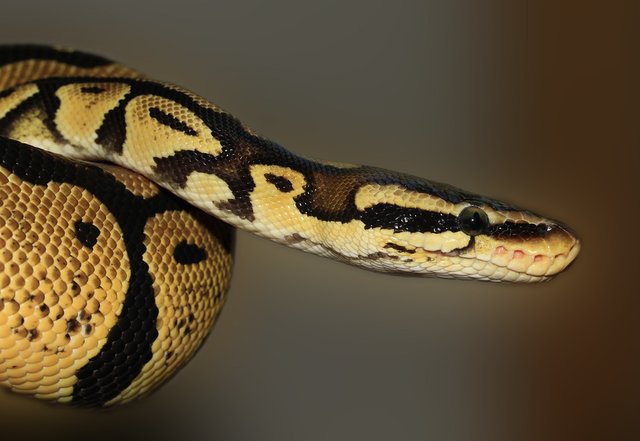
A theory
One of the most remarkable skills pastists have is to generate theories, and there's where "Ms. theory" puts her formal scientific dress. In scientific terms, a theory is not what your friends hold about how to go talk to the chick you like, unless your friends took a large amount of evidence, conclusive and present in scientific literature about the topic and build a unified explanation that connects all that evidence into a cohesive story and that, on top of that, has predictive power over yet undisclosed evidence. This means that NO, your theory about the chick is no theory. "Theory" is Evolution, that explains a bunch of independent discoveries and go through different fields of science while interconnecting into a story that we can explain millions of times. Theory is Relativity, that becomes stronger and stronger every time an experiment destined to destroy it fails, and Theory is the Snake Detection as catapulting agent of visual and brain development in primates, even when this last one is less popular than the previously mentioned ones... For now :) .
I found this story about monkeys and snakes not a long time ago, and right after reading it it became part of a knowledge that once is seen it cannot be unseen. Just like a snake, how appropriate.
This theory, essentially states, that if we are the visual based critters with huge brain it is thanks to, at some point, to the large amount of critters that were willing to have us as dinner (or a very primitive mammal that later evolved into the known man, but... you get the idea). Lynne Isbell (the main believer of this idea) proposed that in the first stage of sight specialization, the orbital convergence and brain development was forced by constrictor snakes, and, deepening with poisonous snakes, empathizing the positive adaptive advantage this evolution had.
So, it sounds pretty crazy...
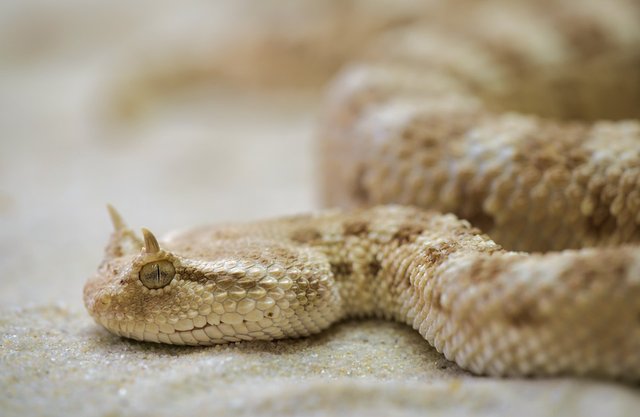
Backup your theory
To turn her back to irrelevance, Lynne relies on ecology, anatomy, anthropology, genetics, evolution and probably a LOT of will; at least enough to feed the staff of Chinese engineers in the first colony in Mars.
One of the first things she did was discard that there was a direct relation between our stereopsys (you know, that cool feature of having both eyes looking forward, so that our brains may get a decent 3D info) and the fact of being able to grab branches, and that idea that meant that one did not imply the other showed up in the shape of Carpolestes (a pretty weird mammal) that had the ability of grabbing onto branches without that cool Orbital trait. This meant that both feats could've evolved nearby in time and overlapped in one critter, but were not necessarily implying each other.
Isbell strengthens her theory when she starts studying the visual system of different cousins in our furry family, deepening into the human and rhesus visual system
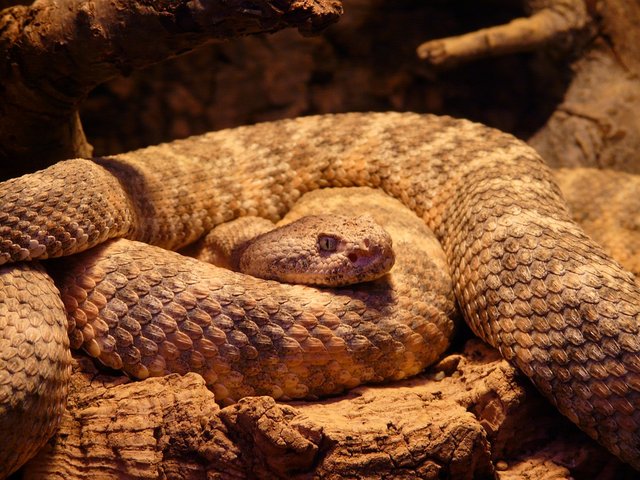
Observe, adjust and detect
Or "How am I in the imperative need of resuming a huge research to be fit for the average Steemit user so that they may read it".
We always end up talking about vision in critters like us (or close relatives), and make reference into two "paths of sight": ventral and dorsal, one specialized in perception and another one in action, and name them under some tidy characters that refer to the most representative cellular kinds (Parvocellular and Magnocelular vision).
The P, specialized in seeing, this is, what we instinctively think about when we speak about sight, is specialized in colors, shapes and information related to central vision. Therefore, the M has a lot less to observe and a lot more to do with using our sight to adjust our movements (Allow me to repeat that this oversimplification is for the sake of allowing you to finish reading this article before the next season arrives).
A little issue, until now, I haven't mentioned snakes. WHERE ARE MY SNAKES? Well, in the last eras, we had the need of adding a third path, particularly relevant to Isbell's theory: the Koniocellular. This was baptized our detection sight it has a very good response to contrast, movement and has a huge responsibility in the direction or attention before the information is processed and converted into images. Yes, it generates a response before the brain is able to perceive it... considering that we see thanks to what our brain interprets...
We've a sight that sees, without seeing. We are weird.
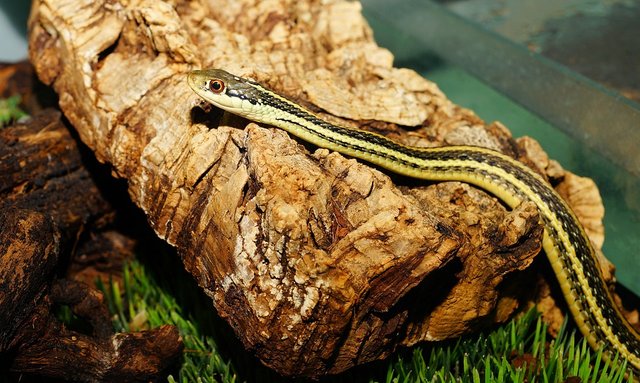
This would be interesting, yet irrelevant, until we note that K has direct connections with our Module for Fear, that is not a paranoid conspiranoid low budget movie, it is an automatic system that keeps us away from MURDEROUS THINGS.
The idea of instinctively escaping from these critters that forged a natural fear in our evolution, starts sounding not so crazy now. 20 points for Slytherin.
The nicest thing about this theory is that it can predict several things, including a physiological response by just seeing a snake. Experiments that did not exist back then, and now do, confirm a lot of data. One of the most interesting ones consisted in showing people with Ophidiophobia (fear to snakes) masked images of snakes they displayed signs of anxiety, even when they were unable to spot the snake on the images.
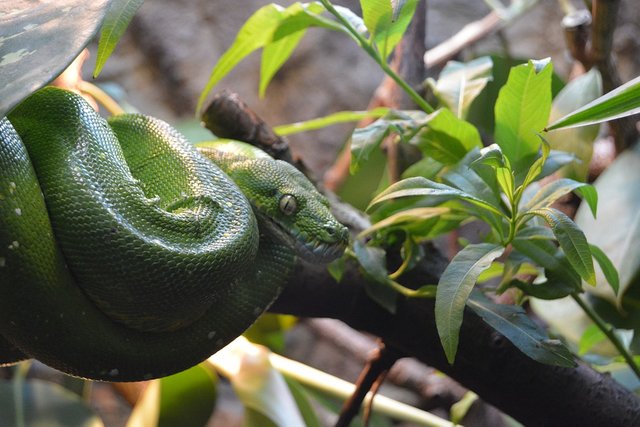
DEFCON 1
We know that squirrels and rats respond adversely to snakes as soon as they see them . They do not learn to fear them, they just have that skill (now we know that we detect them and pay special attention to them, but not necessarily fear).
As a matter of fact, there's recent experiments that displayed a few other data: we humans are able to selectively detect snakes when they are out of the center of our view, and we are also faster to identify them (as a control group random drawings were used). Yet the most interesting experiment under my point of view is this one: They showed letters to the test subjects on one side, and images in the other and asked the volunteers to say what letters they saw. The interesting part was: when a snake was shown, the subjects took longer to identify the characters. This meant having a snake in the visual field perturbed the subject's attention, that reaims instinctively to the Voldemortian companion.
Better geared to survive. This natural adaptation played a key role in our evolution.
What we cannot stop seeing is, we are what we are because others already came the way we came. We all are "pastists" whether we like it or not.

If you liked this post and its informal way of talking about sciences, please, follow me for more!
Leave a comment either for good or for bad reviews. I take everything as constructive, and I really appreciate the feedback, even from trolls (at least a troll read it before being himself!).
Copyrights:
All the previously used images are of my authory or under a CC0 license (Source: pixabay), unless openly stated.
All the Images created by me possess a WTFPL licencing and they are free to redistribute, share, copy, paste, modify, sell, crop, paste, clone in whatever way you want.
Exactly my kind of science stuff :-) followed